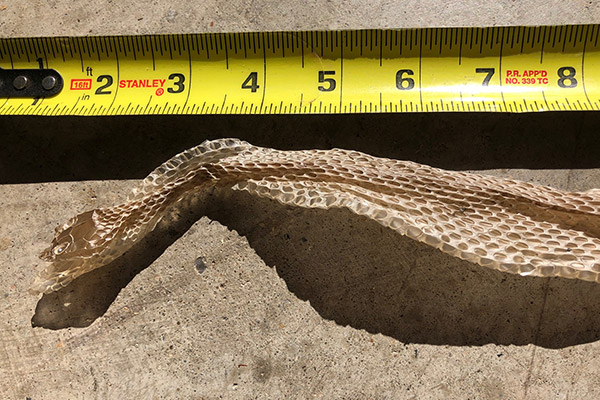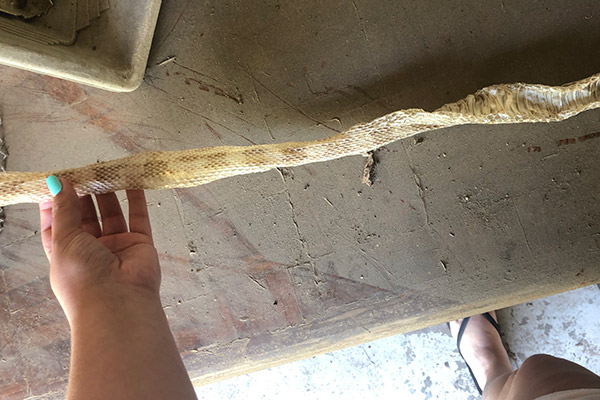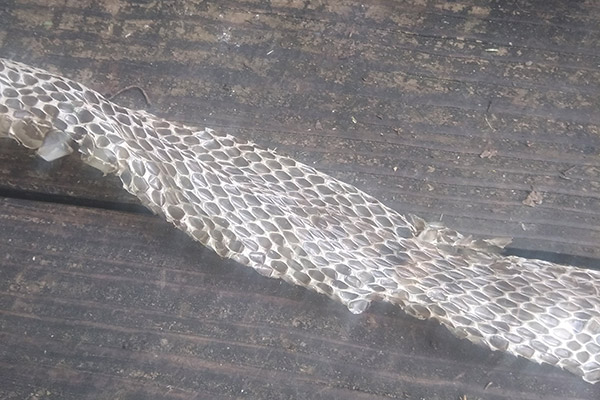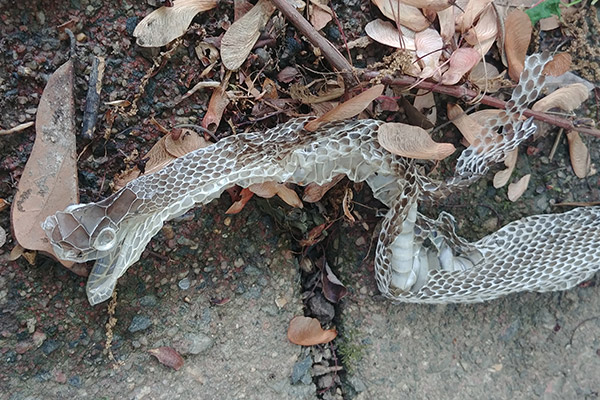- info@animalatticpest.com
- Call - we service 300 locations
Can you tell the type of snake by its shed skin
YES! I, David, can identify your snake for you, based on the skin. Email me a photo (or two) of the skin, along with where you found it, (city and state), and I will respond today. I identify over 20 skins per day on average, every day, in the year 2025. It's my hobby! Email me at dseeveld@gmail.com
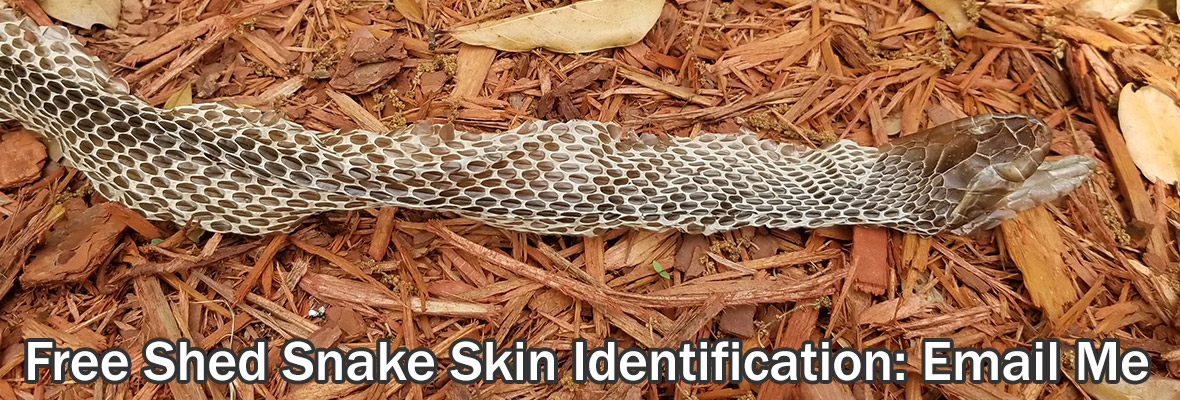
Yes, you can tell the species of snake from its shed skin. It's more challenging than identifying an actual living snake, but it can be done. By examining the scale pattern, along with other clues such as location found, size, diameter, remnants of color pattern, skin thickness, and how
intact or shredded it is, I can nearly always determine the species, or at least the genus of the snake.
For free snakeskin ID today, email me, David, at dseeveld@gmail.com
I have identified probably over 10,000 skins in my life! Sometimes it's tricky, but truth be told, about 90% of the skins come from the same few species over and over. Some species of snake are much more common than others, especially
around homes, where most of the skins tend to be found. Some skins, like rattlesnake skins, are more commonly found in more rural settings. Though I do sometimes get venomous snake skins around the home. I like a challenge, so email
me your snake skin photos today. Be sure to include the city and state where you live, because geography is a big clue.
Some Examples Of Different Snake Skins I've Identified
I run a wildlife removal company, and yes, we remove snakes. We can also provide you with snake prevention services. We do charge for snake removal, but I do not charge for snakeskin identification. If
you need snake services in your town, we service over 300 US cities/towns. Learn how much does snake removal cost from our company. If you have a problem with snakes on your
property, I advise education first. Most snakes are harmless, and good to have around! I will tell you what kind of snake you have based on the skin, so you will know if it is a dangerous snake or not.
People are usually worried about a rattle snake skin, or a copperhead snake skin, or a cottonmouth snake skin, or even a coral snake skin, but most of the time, it's garter snakes and rat snakes and racers and
common species like that.
I do not like it when people kill snakes. Read about how to kill snakes, and why it's a bad idea. If you have a snake inside your house, you might want to trap it. Read about
snake traps, and why they should only be used indoors. In your research you might read about snake repellents but they are a scam! Snakes
are not repelled by these products. However, since snake sightings are usually rare and often one-time, people who use repellents assume they are working, even though they are not. If you need professinal
snake help, click here to hire us in your town, but again, if you want free identification of snake skins, email me at dseeveld@gmail.com.
Can You Tell The Type Of Snake By Its Shed Skin?
Since experts can easily recognize a snake by looking at it, it is a logical question to wonder if you can identify the type of snake based on its shed skin. While it is possible, this is much more complicated than identification with the entire serpent present. Even so, experts, particularly herpetologists, should be able to identify the snake. Because of their vast knowledge, they are typically able to recognize the snake based on the skin, although this is not always the case.
How To Identify The Snake
An expert would identify the snake that shed a skin the same way they would identify the snake if it was present: the scales. The scale pattern is the biggest clue as to what type of snake it is and experts will pay the most attention to the head, as this is almost as identifiable as a fingerprint – for those who can recognize the pattern. Professionals will also look for other hints as to what type of snake it can be, such as patterns on the body scale, the length of the shed skin, and the diameter of it. Unfortunately, shed skins don't have color, which makes it very challenging to identify the exact snake, especially in the case of two species which are similar.
Can You Identify The Snake Yourself?
With some patience, it is possible to identify the snake yourself, but you will be in for a challenge. You will also need to have a thorough guide to snakes handy. Because of the difficulty involved, it is smarter to just have a professional ID the snake for you. If you want to do it yourself, however, start by paying attention to the length. The shed skin tends to seem much longer than the snake, but even so, you can eliminate a long list of potential snakes from your list based on its length.
After that, take a look at the girth of the shed skin. This will be your first step towards telling if the snake is dangerous. In many areas of the United States, non-venomous snakes are typically thin and long with venomous ones being thicker and shorter. Unfortunately, this rule isn't always true so you will need to look at other factors to figure out how much care to have around the snake. From there, you can check for keeled scales or smooth scales. Keeled scales mean there is a ridge that runs along the center of each and it can help with identification. After this, try to spot obvious patterns on the skin. If you are ready to give up, consult an expert.
Garter snake skins (sometimes called garden snake skins) often have a darker ridge or stripe along the top of the back. If you have a very long skin, epecially a long thin one, there's a good chance it came from a rat snake in many parts of the US.
Some people want to know the meaning of finding a shedded snake skin, like if it is a sign of good luck or bad luck. I actually consider it a sign of good luck, because it means a snake lives nearby, and I like having snakes around!
Some people who have found a snake skin in yard wonder "do snakes shed close to where they live?" The answer is that yes, of course they do! Snakes do shed close to where they live. They shed several times per year, and they will do so whereever they are at the moment. It's possible that they'll
just be passing through an area, but many snakes tend to keep a territory and range where they live. So if you find a skin, you know for sure that the snake was there at one point, and it's probably living not too far away now.
Go back to the main snakes in the attic page. I do often find snake skins in the attic, usually rat snakes that have gone up there to eat rats or mice. You can identify a snake by the skin based on many factors, and location in the attic is a clear giveaway that it's a type of rat snake!

